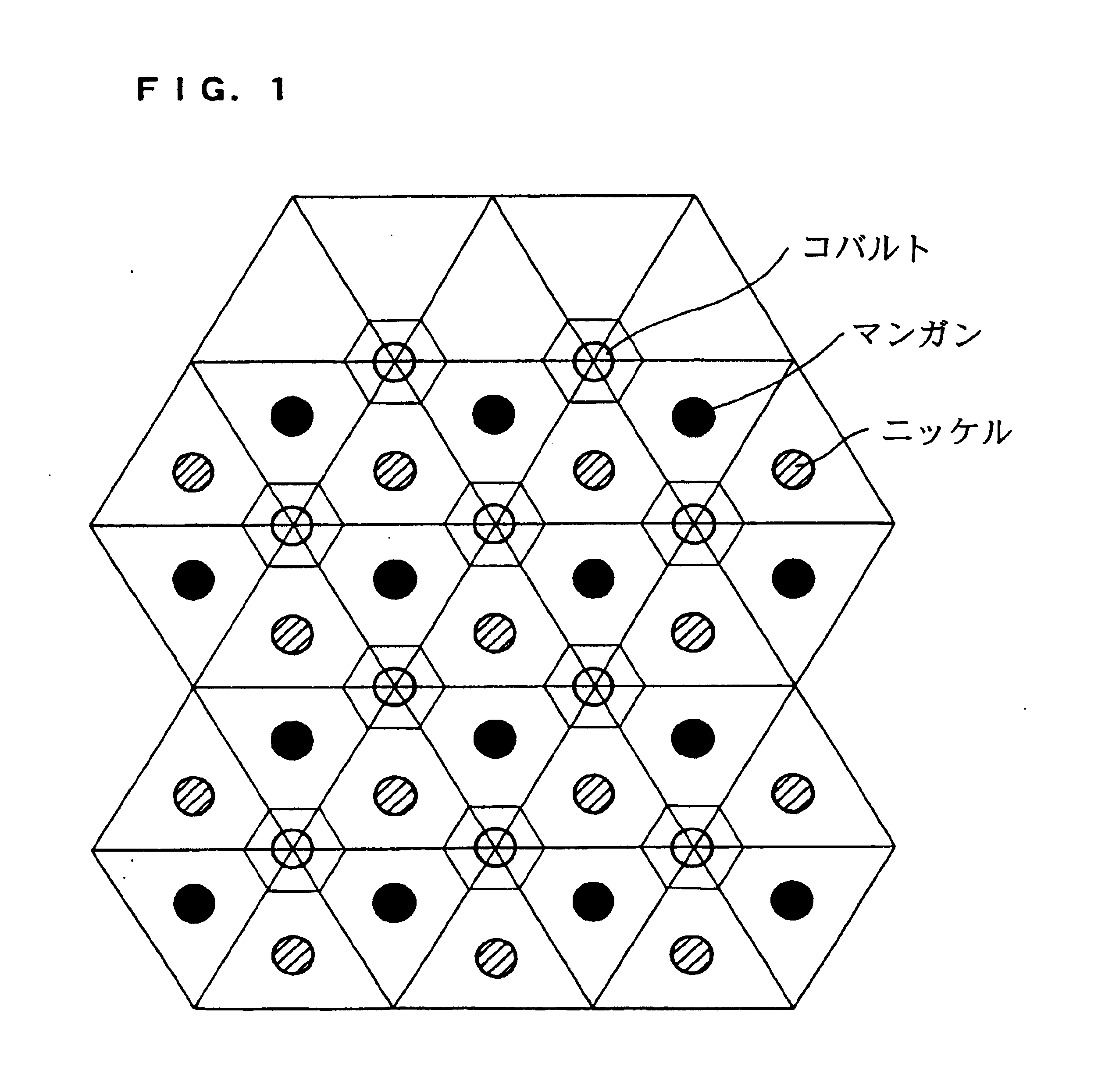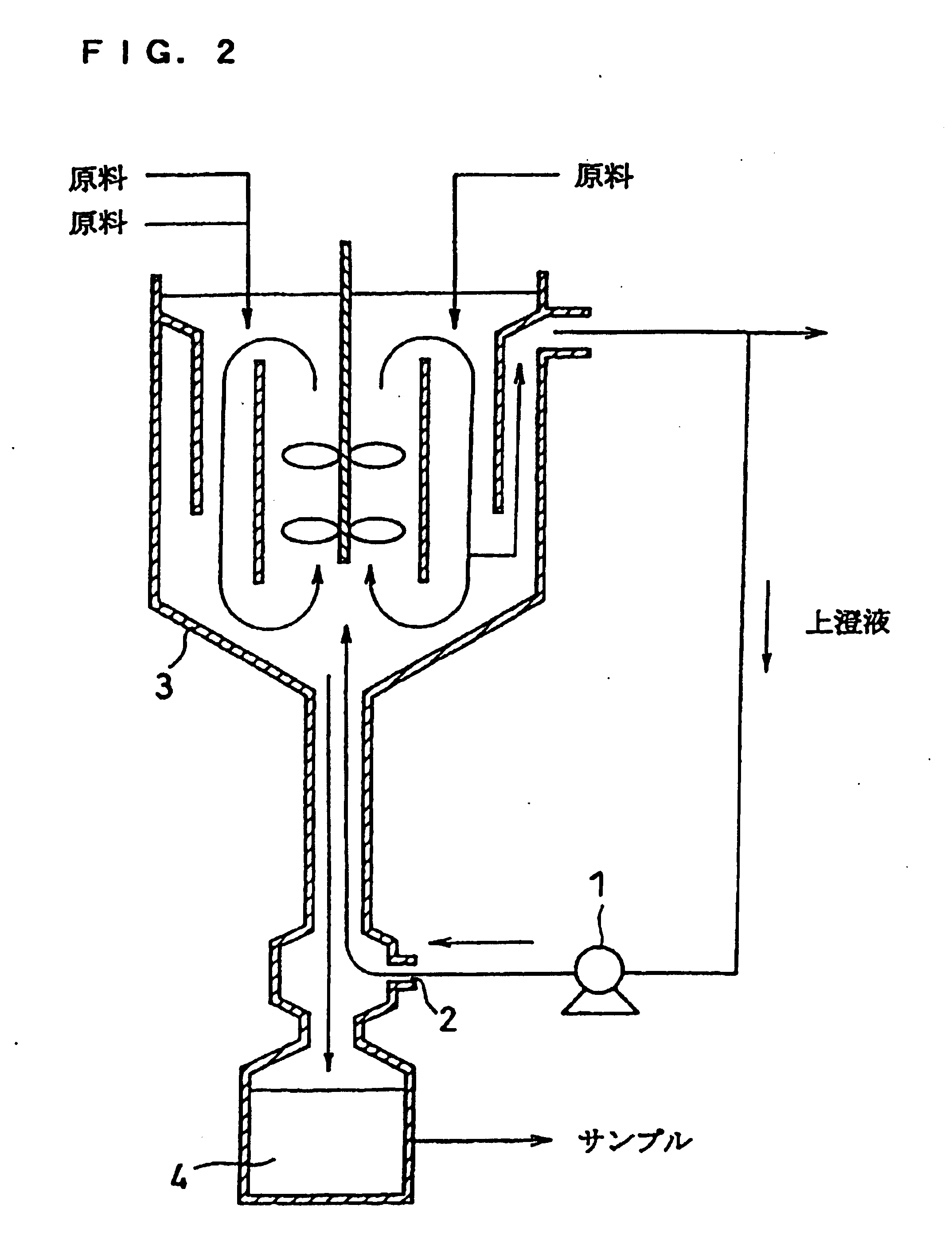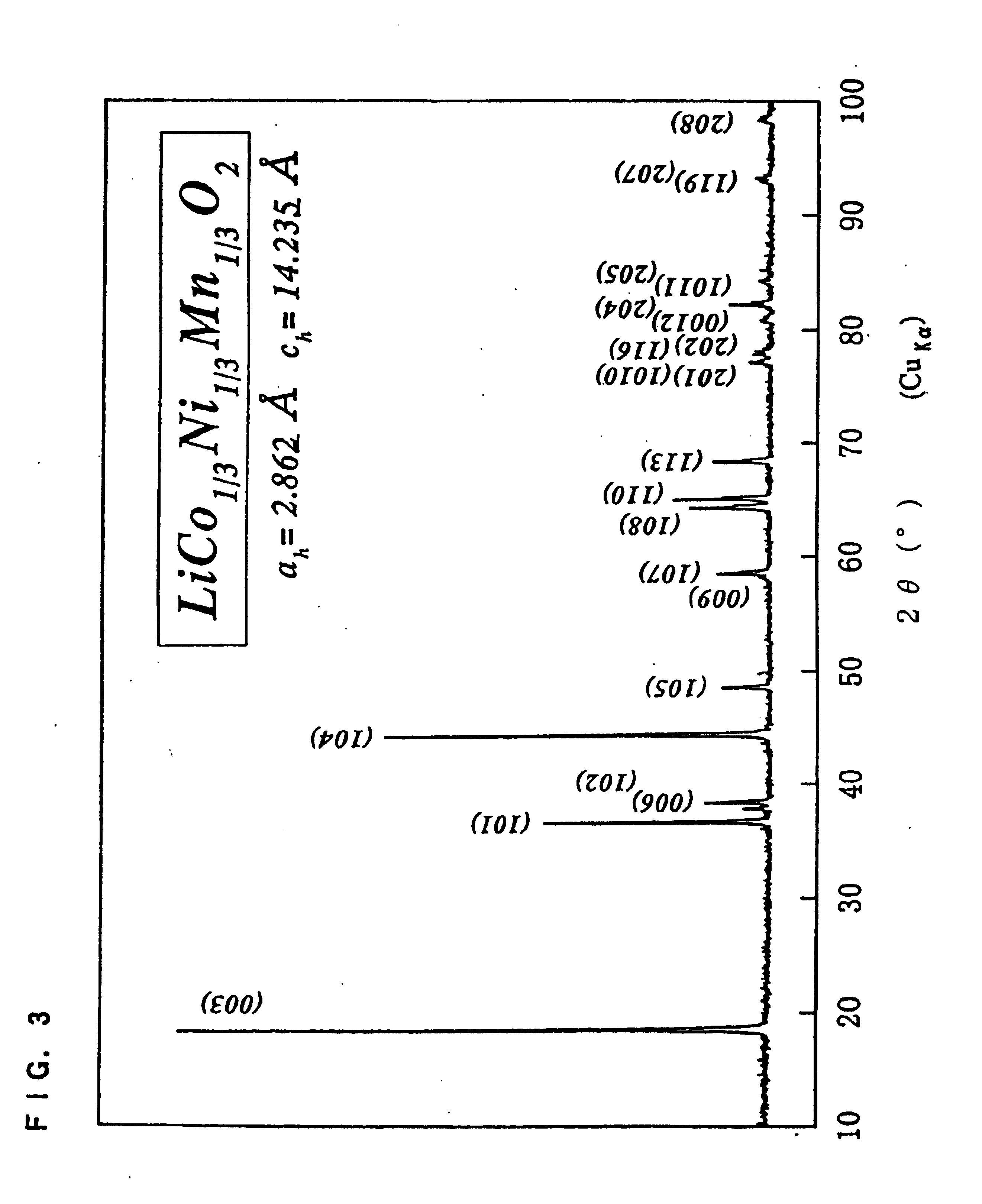Positive electrode active material and nonaqueous electrolyte secondary cell including the same
a technology of active materials and negative electrodes, applied in the direction of manganates/permanent compounds, sustainable manufacturing/processing, nickel compounds, etc., can solve the problems of high cost of co, difficult to obtain composite oxides having single-phase crystal structures, and high cost of co. , to achieve the effect of good charge/discharge efficiency and high capacity
- Summary
- Abstract
- Description
- Claims
- Application Information
AI Technical Summary
Benefits of technology
Problems solved by technology
Method used
Image
Examples
example 2
Stability of Material
[0151] After Li leaves LiNiO2 by charging, LiNiO2 becomes extremely unstable and is reduced to NiO by releasing oxygen at a relatively low temperature. This is fatal when it is used for the positive electrode active material for a battery, and this would cause a thermal runaway of the battery due to the generated oxygen, leading to ignition or rupture of the battery.
[0152] Such disadvantage was able to be overcome by using the oxide obtained by incorporating nickel, manganese and cobalt at a ratio of 1:1:1. Furthermore, doping the vicinity of the surface of the positive electrode active material with aluminum improved the heat resistance. The battery using the positive electrode active material obtained by doping LiNi1 / 3Mn1 / 3Co1 / 3O2 with aluminum was put through the following test. The amount of aluminum was 5 atom % of the total amount of nickel, manganese and cobalt. The battery used in Example 1 was overcharged up to 4.8 V, which was then disassembled and t...
example 3
Electronic Conductivity of Material
[0156] The doping of LiNi1 / 3Mn1 / 3Co1 / 3O2 of the present invention with a different element represents an added function; moreover, the addition of magnesium thereto greatly improves the electronic conductivity. This can reduce the amount of the electrically conductive material to be added into the positive electrode plate; thus, more active material can be filled therein, resulting in the increase of the capacity.
[0157] In this example, 10 parts by weight of carbon powder as the electrically conductive material and 5 parts by weight of poly vinylidene fluoride resin as the binder were mixed with 85 parts by weight of the positive electrode active material powder. Electronic conductivity was measured for thus obtained electrode plate. In the measurement, a resistance value in the cross sectional direction of the electrode plate was measured, and the obtained value was converted to the electronic conductivity per cross-sectional area. Table 3 shows...
PUM
| Property | Measurement | Unit |
|---|---|---|
| particle size | aaaaa | aaaaa |
| particle size | aaaaa | aaaaa |
| voltage | aaaaa | aaaaa |
Abstract
Description
Claims
Application Information
 Login to View More
Login to View More - R&D
- Intellectual Property
- Life Sciences
- Materials
- Tech Scout
- Unparalleled Data Quality
- Higher Quality Content
- 60% Fewer Hallucinations
Browse by: Latest US Patents, China's latest patents, Technical Efficacy Thesaurus, Application Domain, Technology Topic, Popular Technical Reports.
© 2025 PatSnap. All rights reserved.Legal|Privacy policy|Modern Slavery Act Transparency Statement|Sitemap|About US| Contact US: help@patsnap.com



